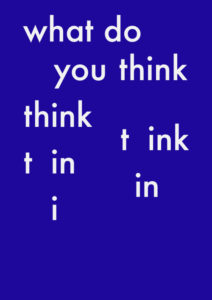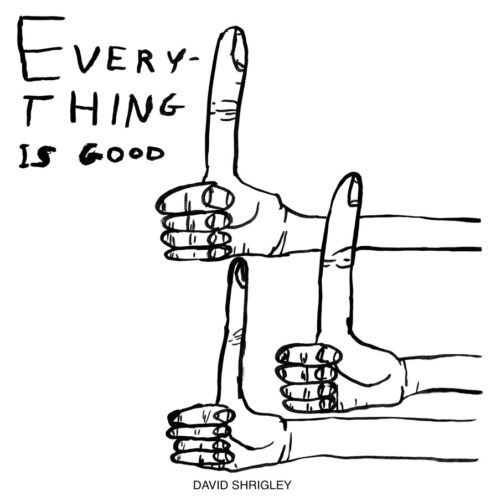I ended the last article with a sense of possible potential behind breaking or forgetting the rules in a creative essence development context. Quite often, the surrender of rules gives the impression of ‘anything goes’ and this can be thrilling and also really get some hackles up. It tends to raise a heavy defensive position with the assumption that without set standards or ‘foundations’, everything will get sloppy, no one will really care about anything, we’ll have chaos and/or mediocrity and then what? Is everything to be considered good?

Source unknown.
The thing is, an attitude of anything goes, although seemingly opposite, is not in opposition to order. The way I like to think of it is in terms of flux. It’s tricky to describe something that inherently sidesteps explanation but here’s one attempted slo-mo view:
If I’m aligned with a creative frequency, I am allowing anything to be expressed without trying or editing. There is a dissolving of thoughts or ideas. I give up the reins and forget what I’ve consciously learned and, ultimately, I forget myself. I don’t actually think all this; I’m just there, sort of empty and acting on impulse, in a current being lead. But this state is not permanent (I don’t know if it can be). It’s as if it flows in layers. I switch frequencies and my logical processes kick in, trying to make sense of things and, depending on my intention, I allow this influence to take part in varying degrees (although it tries to take over). If it’s going well, I am able to float from frequency to frequency pretty fluidly, often what feels like an instant. It’s as if these processes are independent of one another but somehow have the ability to function almost simultaneously in a sort of dalliance that potentially forms an expansive harmonious whole. And it probably feels different for everybody.
A year ago, I read the following in one of Rob Breszney’s monthly horoscopes:
“According to ancient Greek writer Herodotus, Persians didn’t hesitate to deliberate about important matters while drunk. However, they wouldn’t finalize any intoxicated decision until they had a chance to re-evaluate it while sober. The reverse was also true. Choices they made while sober had to be reassessed while they were under the influence of alcohol.”
It seems even the ancient Persians had an understanding of the value of different kinds of knowing (beyond rational thinking) and that perhaps the more we include, the more extensive view we have of the big picture. One of the things that may disrupt or shut out a broader collaboration is the belief that some universal logical foundation must come first. This may join another assumption that once someone has accomplished a certain mastery of skill, they’ve earned the right to make something that breaks the rules. Like, Picasso had the ability to paint realism so he had achieved the creds to choose another form of expression. This has a fair bit of depth to unpack and goes back to earlier parts of this chapter concerning authority and hierarchy but, for now, I am hoping to stitch in this insight about partnership.
As previously mentioned, creativity does not operate on fixed or standardized foundations. It does not follow static linear/logical patterns, it seems to evade certain intellectual understanding and reason and, perhaps most key to these reflections, it does not conform to cause and effect.
Recently, while browsing educational websites, I came across the alarming declaration that the Principles and Elements of Art and Design are “the building blocks of art.” This comes across as: learn these fundamentals (cause) and you will know how to make art (effect). I have even read claims such as “the use of these principles can help determine whether a painting is successful, and whether or not the painting is finished.” Unfortunately, this interpretation is how I see such alleged foundations being applied in primary, secondary and even post-secondary education and it leaves out the vastly complex and mystifying nature of the creative impulse. These principles and elements may be useful to us but when they are applied as an origin for art, they leave the majority of students I witness straining to match their work to existing ideas of the general build and appearance of ‘good’ art. And then it’s easy to get lost in the wish-it-could-be and should-be that are wrapped up in external expectations, judgement and comparison of the finished work.
Though I never consider such ‘building blocks’ (which are more like propositions) in my own creative practice, I can see the potential if they are used as a means to think about existing works of art and how this process may present insights if it is in the spirit of curiosity and exploration versus dogma (we must admit that great works of art and creative pursuits came before the recent advent of the Principles & Elements of Art & Design and will continue to be made without conscious awareness of them). I can also see how such principles and elements could be employed to explore craft and it is possible to experience a resonance that links to a creative path. I get the feeling, though, that the (conscious or unconscious) intention behind the implementation of such fundamentals is to establish some reigning authority or to pin something down to measure and assess; acting as a leash that seeks the submission of the complexity of an individual’s unique creative process.

by William Hilton, after Joseph Severn oil on canvas based on a work of circa 1822 © National Portrait Gallery, London
To swing this back to the idea of a partnership between creative abilities and logical/rational abilities, each must be free to exist by its own nature. There is no rooted hierarchy or authority. Creativity cannot flow directly out of any fixed, logical process (or principle) in the same way we wouldn’t ask something logical to be more mysterious or confounding.
This reminds me of an exciting realization I had back in the 90s when I found a used copy of Selected Letters of John Keats. In December, 1817, the Romantic poet wrote to his brothers and described a necessary aspect to writing poetry that he referred to as:
“Negative Capability, that is, when a man is capable of being in uncertainties, mysteries, doubts, without any irritable reaching after fact and reason”
If we have a lack of awareness of our creative self and how it feels to be in an unbridled creative space, creative ability may need to be freed up separately without any “irritable reaching after fact and reason.” We may achieve this by engaging in activities with an openly curious attitude that coaxes out and permits our impulses. Allowing these impulses may come quickly or need practice but it won’t happen on demand; any reaching, rushing, comparing, doubting, forcing, expecting or judging will likely pinch them off.
Once the creative self is activated and familiar, it seems easier to balance with desirable logical processes or outcomes. Perhaps if we surrender to the anything goes of the creative realm, we’ll experience an expansiveness that has more to offer as a compliment to the logical realm. The creative essence won’t submit to any reign of logical or rational terms, and it doesn’t seem to fight it either. It’s as if it would rather just lean back and wait until the coast is clear.
“I don’t press the shutter. The image does. And it’s like being gently clobbered.”
-DIANE ARBUS
